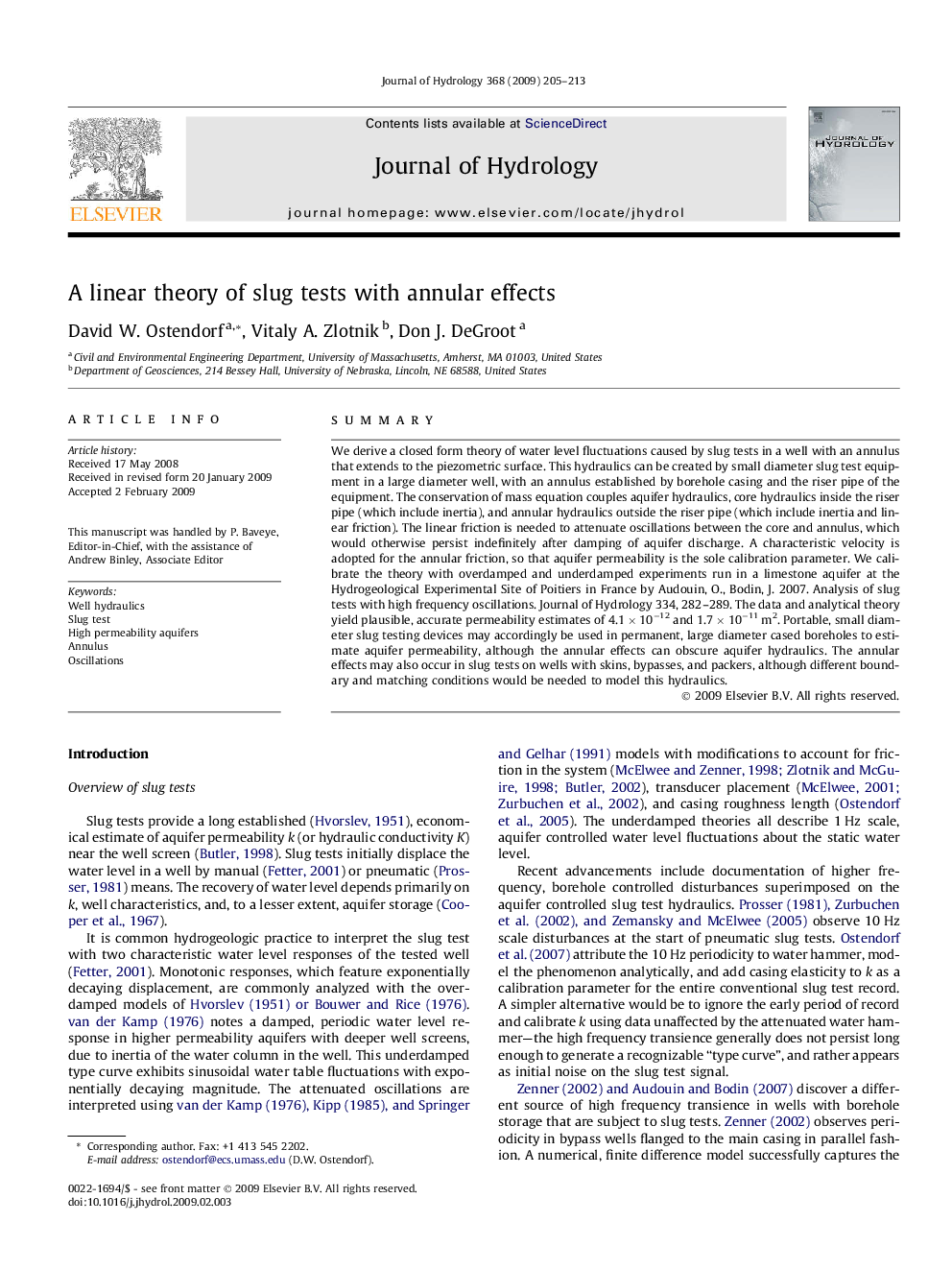| کد مقاله | کد نشریه | سال انتشار | مقاله انگلیسی | نسخه تمام متن |
|---|---|---|---|---|
| 4579039 | 1630085 | 2009 | 9 صفحه PDF | دانلود رایگان |

SummaryWe derive a closed form theory of water level fluctuations caused by slug tests in a well with an annulus that extends to the piezometric surface. This hydraulics can be created by small diameter slug test equipment in a large diameter well, with an annulus established by borehole casing and the riser pipe of the equipment. The conservation of mass equation couples aquifer hydraulics, core hydraulics inside the riser pipe (which include inertia), and annular hydraulics outside the riser pipe (which include inertia and linear friction). The linear friction is needed to attenuate oscillations between the core and annulus, which would otherwise persist indefinitely after damping of aquifer discharge. A characteristic velocity is adopted for the annular friction, so that aquifer permeability is the sole calibration parameter. We calibrate the theory with overdamped and underdamped experiments run in a limestone aquifer at the Hydrogeological Experimental Site of Poitiers in France by Audouin, O., Bodin, J. 2007. Analysis of slug tests with high frequency oscillations. Journal of Hydrology 334, 282–289. The data and analytical theory yield plausible, accurate permeability estimates of 4.1 × 10−12 and 1.7 × 10−11 m2. Portable, small diameter slug testing devices may accordingly be used in permanent, large diameter cased boreholes to estimate aquifer permeability, although the annular effects can obscure aquifer hydraulics. The annular effects may also occur in slug tests on wells with skins, bypasses, and packers, although different boundary and matching conditions would be needed to model this hydraulics.
Journal: Journal of Hydrology - Volume 368, Issues 1–4, 30 April 2009, Pages 205–213